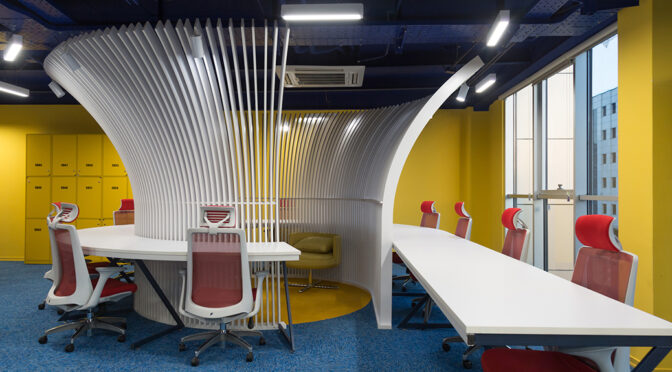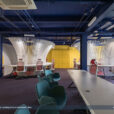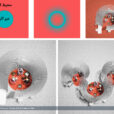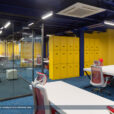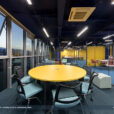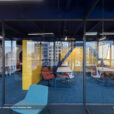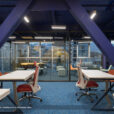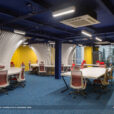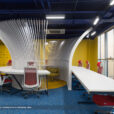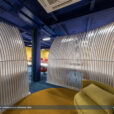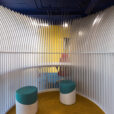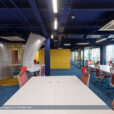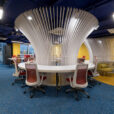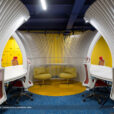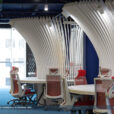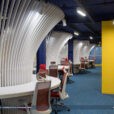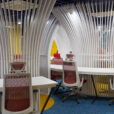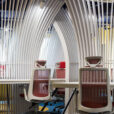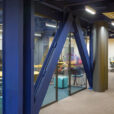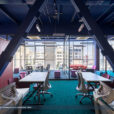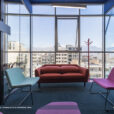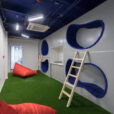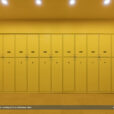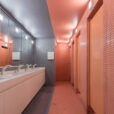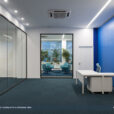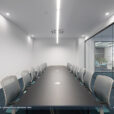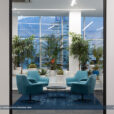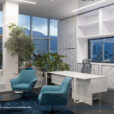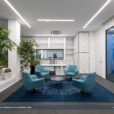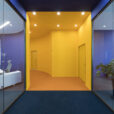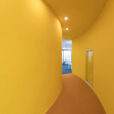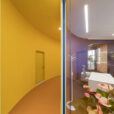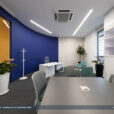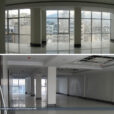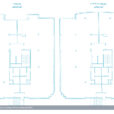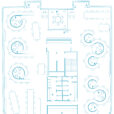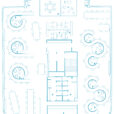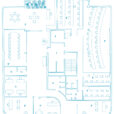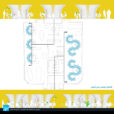ساختمان مرکزی شرکت توسن
دفتر معماری ۵۱-۳۵ (حمید عباسلو، عباس یاقوتی، ندا ادیبان راد)
موقعیت: تهران، ایران
تاریخ: ۱۳۹۹
مساحت: ۴،۴۵۴ مترمربع
وضعیت: ساختهشده
کارفرما: شرکت توسعه سامانههای نرمافزاری نگین (توسن)
همکار طراحی: محمدرضا آقایی
سازه: مجید کولیوند
تاسیسات مکانیکی: محمدجواد شوشتری
تاسیسات الکتریکی: شرکت توسعه سامانههای نرمافزاری نگین (توسن)
همکاران اجرا: شرکت آریسمان صنعت، شرکت طراحان برتر چیدمان آریا، شرکت توسن خلیج فارس، فرهاد محمدی، حسین باباپور، محمد خاورزاده، غوثالدین سلطانی، رحمان حسنپور، علی رمضانی
عکس: محمدحسن اتفاق
خواسته کارفرما، حذف اتاقهای مجزای کارمندان، یعنی Open Space بود، اما این حذف، با توجه به بخشهای مختلف اداری موجود در شرکت، مسئله تداخل عملکردها و از دست رفتن حریم کاری افراد، و در نتیجه، بههمخوردن آسایش روانی کارمندان در محیط کار را به همراه داشت، چرا که دیوار با محدودکردن دیدهشدن مستقیم افراد و نیز کنترل ارتباط آنها با یکدیگر، نقش مهمی در تامین این آسایش روانی بازی میکند.
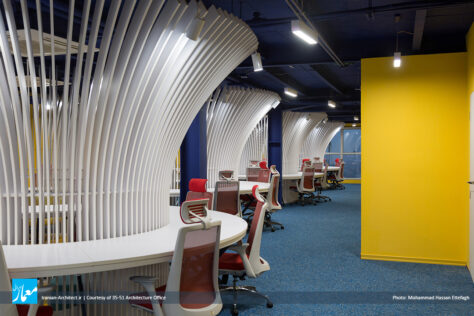
رسیدن به تعادلی سازنده بین مفهوم پلان باز و بسته، بهگونهای که مزایای هر کدام در جهت پوشش معایب دیگری قرار گیرد، تلاش اصلی پروژه را شکل داد. در همین راستا، با استفاده از ساختار دوناتیشکل برای میزهای کار و محصورکردن فضای داخل آنها، در عین به وجود آمدن فضایی برای استراحت بین کار و گپوگفتهای درونگروهی کارمندان، و همچنین انتظار مراجعان غیررسمی، یکدستی ساختار Open Space نیز از آن گرفته شد.
Tosan Company Headquarters
35-51 Architecture Office (Hamid Abbasloo, Abbas Yaghooti, Neda Adiban Rad)
Location: Tehran, Iran
Date: 2020
Area: 4,454 sqm
Status: Completed
Client: Tosan Company
Design Team: Mohammadreza Aghaie
Structure: Majid Koolivand
Mechanical Engineering: Mohammad Javad Shooshtari
Electrical Engineering: Tosan Company
Construction Team: Arisman Sanat Company, TCA Company, Persian Gulf Tosan Company, Farhad Mohammadi, Hossein Babapour, Mohammad Khavarzadeh, Ghoseddin Soltani, Rahman Hasanpour, Ali Ramezani
Photo: Mohammad Hassan Ettefagh
The project client asked us to avoid of creating some small separate rooms for each employees. On the other hand, due to the different administrative departments of the company, and the large number of employees, open office design caused noise and visual interference, loss of privacy, and disturbing their mental health. In this way, using both open plan design and private room plan structure, in a way that the advantages of each covers the disadvantages of the other, became our main challenge.
In this regard, with the design of a donuts-shaped structure for work desks, and enclosing the space inside them with vertical blades, it enabled to semi cover the employees’ private spaces with their equipment and files. As the vertical blades of curtains were designed perpendicular to the donuts desks, visitors are able to see a part of circular space, only when they look at directly. Thus, in addition to creating visual privacy for employees, and reducing the congestion of the space, it was also formed a dialogue space for breaking time.

